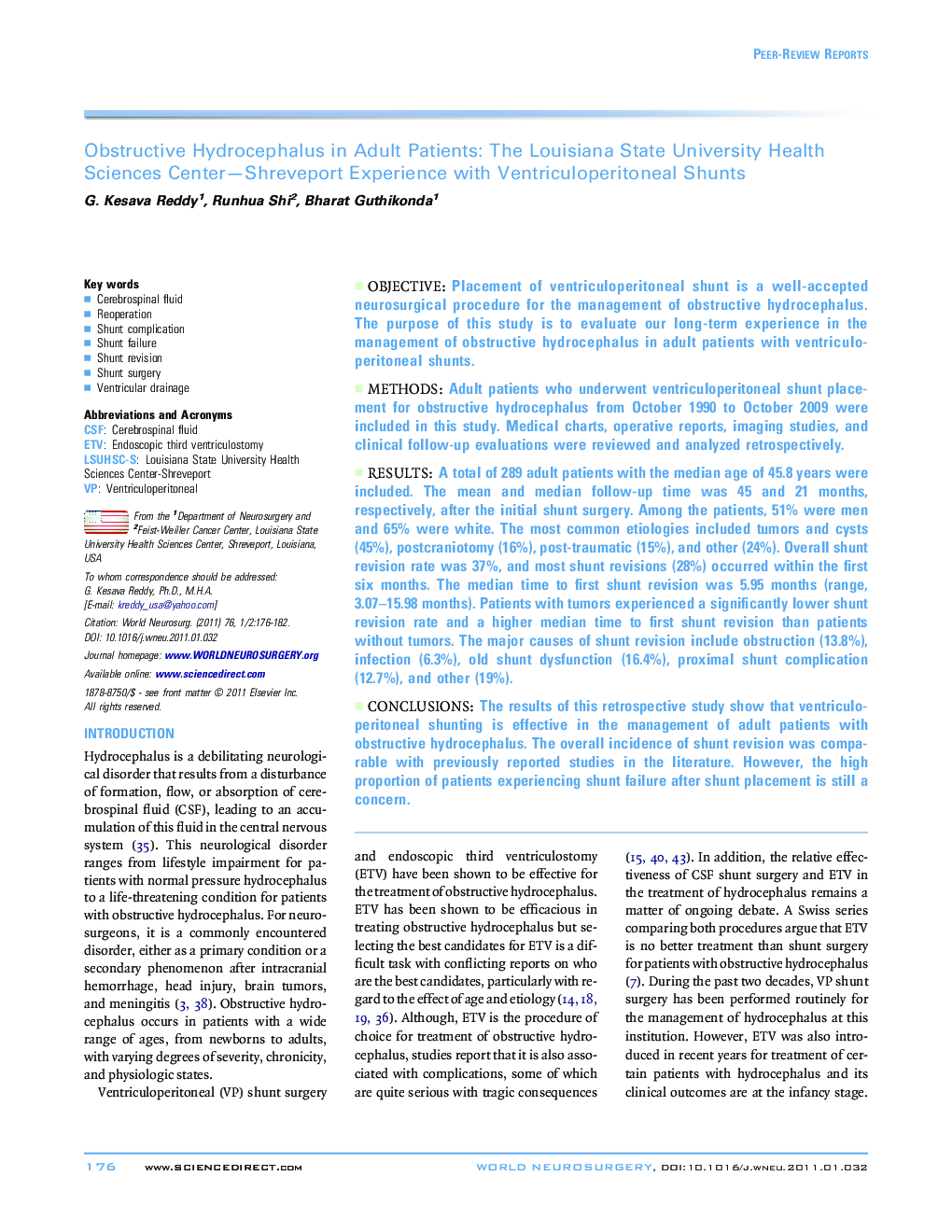| Article ID | Journal | Published Year | Pages | File Type |
|---|---|---|---|---|
| 3097023 | World Neurosurgery | 2011 | 7 Pages |
ObjectivePlacement of ventriculoperitoneal shunt is a well-accepted neurosurgical procedure for the management of obstructive hydrocephalus. The purpose of this study is to evaluate our long-term experience in the management of obstructive hydrocephalus in adult patients with ventriculoperitoneal shunts.MethodsAdult patients who underwent ventriculoperitoneal shunt placement for obstructive hydrocephalus from October 1990 to October 2009 were included in this study. Medical charts, operative reports, imaging studies, and clinical follow-up evaluations were reviewed and analyzed retrospectively.ResultsA total of 289 adult patients with the median age of 45.8 years were included. The mean and median follow-up time was 45 and 21 months, respectively, after the initial shunt surgery. Among the patients, 51% were men and 65% were white. The most common etiologies included tumors and cysts (45%), postcraniotomy (16%), post-traumatic (15%), and other (24%). Overall shunt revision rate was 37%, and most shunt revisions (28%) occurred within the first six months. The median time to first shunt revision was 5.95 months (range, 3.07–15.98 months). Patients with tumors experienced a significantly lower shunt revision rate and a higher median time to first shunt revision than patients without tumors. The major causes of shunt revision include obstruction (13.8%), infection (6.3%), old shunt dysfunction (16.4%), proximal shunt complication (12.7%), and other (19%).ConclusionsThe results of this retrospective study show that ventriculoperitoneal shunting is effective in the management of adult patients with obstructive hydrocephalus. The overall incidence of shunt revision was comparable with previously reported studies in the literature. However, the high proportion of patients experiencing shunt failure after shunt placement is still a concern.
